Getting It Right From the Start
Building a Better Onboarding Process
When new employees have a positive and effective onboarding experience, it can have a tremendous impact on their future success. In fact, according to a research brief from the Brandon Hall Group, a strong onboarding process improves new hire retention by 82% and productivity by more than 70%.1 However, many companies feel like their onboarding program lacks the consistency and structure needed to best help employees in their new role.
That’s why we wanted to highlight an LTEN award winner who recently helped transform her company’s onboarding program—with terrific results. Chloe Bangs, Sr. Manager of Sales Training for Teva Pharmaceuticals and 2019 LTEN award recipient, discussed with us the impact of transitioning to a cross-functional onboarding process. This interview has been edited and condensed for clarity.
I understand that over the past few years, the Commercial Training & Development (CT&D) team’s onboarding model has undergone a significant shift from a siloed onboarding model to a collaborative and cross-functional one. Why did the team feel the need to make this change?
Originally, each business unit had its own process for onboarding and training. Even when two business units were training new hires on the same product, the process—including the resources and assessments they used—would be different. The decision was made to leave this siloed model behind primarily because the results were inconsistent and there was no unified experience for new hires across all business units.
How is the cross-functional model different from the siloed model?
The biggest difference is that our new cross-functional onboarding model ensures consistency across all business units. CT&D began by evaluating each business unit’s onboarding process and drawing on the best practices from each. The team also surveyed onboarding programs outside of Teva and drew inspiration from their successes. Ultimately, we partnered with an outside training company to create best-in-class resources and assessments to be used across all business units and housed them in Momentum, our new web-based training platform that provides access to all of our onboarding and training materials. The success of this platform and our new onboarding program has exceeded our expectations.
The decision to invest in this large-scale change clearly demonstrates the importance the CT&D team places on onboarding. How do you explain the importance of onboarding to those who question its impact?
Onboarding sets the trajectory for each new hire’s career. Its importance can’t be overstated. In our current cross-functional model, all business units have the same process, so onboarding creates a common language and experience for all new hires. This consistency helps foster the culture and values of the organization and brings us together as One Teva.
From your experience, what are the greatest drawbacks to a poor onboarding program?
Missteps in onboarding can easily create problems down the road, both in terms of sales and customer relations as well as in terms of an organization’s culture. Poor onboarding also leads to dissatisfaction and turnover, which brings us right back to the starting line in terms of the onboarding process. That’s why it’s so important to gain new hires’ buy-in during onboarding.
How did this new onboarding model impact the CT&D team’s ability to meet the needs of the organization?
One of the great things about our collaborative onboarding model is how it reshaped the way we work. When business units were siloed, our trainers were kept siloed as well. Since resources, assessments, and steps were different for each business unit, we trainers couldn’t easily work with other business units without first undergoing training in their onboarding process ourselves.
The collaborative model changes all this. Basically, everyone on the CT&D team can now seamlessly transition to work with any business unit. This has proved invaluable whenever there are personnel changes in the team.
I imagine convincing everyone across the organization to make such a significant change might be difficult. What were the greatest challenges you and your colleagues faced when trying to implement the new cross-functional onboarding model?
I think there’s always a natural resistance—even fear—of change. In our case, some business units felt their onboarding programs were already working for them. Their sales were strong and their reps were productive, so they didn’t see a reason to change. This was an understandable reaction. We needed to show them why, in the long run, our new onboarding program would better serve both their business unit and the organization as a whole.
How did the CT&D team respond to those who were skeptical?
Once we were able to put the program in action, I think the process, tools, and, most of all, results began to sell themselves. Our web-based onboarding and training platform had a lot to do with this. Both leadership and reps across the organization saw how much easier Momentum made onboarding and product rollout.
I also think the planning and organization we put into our new training had a lot to do with winning over skeptics. Working with a consistent vendor throughout this process was invaluable to our executional success. In my experience, adult learners have a very low tolerance for disorganization. If they feel a process is confusing or their trainer isn’t 100% prepared, they quickly become frustrated and check out. This leads to a loss of engagement, which can have a ripple effect that negatively impacts the team, the customer, and even the patients who benefit from our products.
We knew having participant buy-in was the key to making our transition work. Our preparations paid off.
What are the greatest benefits of the new onboarding model? Did it meet the CT&D team’s expectations?
I guess I’d list three things. First, managers really appreciate that new hires coming out of onboarding know how to apply what they’ve learned from day one. This wasn’t the case with the siloed onboarding process, where application was an added step post-onboarding. Having new hires field-ready has made a real difference in the effectiveness and cohesion of teams across the organization, which in turn allows us to better benefit patients’ lives.
Second, because onboarding is consistent across all business units, the process is less impacted or disrupted by shifts in personnel than it was in the past. This was especially helpful during our recent relocation, when there was a large turnover in personnel.
Finally, as I mentioned before, because it’s a shared foundational experience, good onboarding also helps create a unified culture. Building a stronger, more unified organization may be the most lasting impact of the onboarding program.
Before we go, I just wanted to say congratulations on being awarded the 2019 LTEN Emerging Leader Excellence Award for your work in implementing this onboarding model.
Thank you! It’s really such an honor. I’m incredibly appreciative that Jennifer Bryan, my team leader, nominated me.
Reference
- Laurano M. The True Cost of a Bad Hire. Brandon Hall Group. https://b2b-assets.glassdoor.com/the-true-cost-of-a-bad-hire.pdf. Published August 2015. Accessed August 12, 2019.
Chloe Bangs has over 20 years of pharmaceutical sales and marketing experience, with 4 years of experience in training roles with increasing levels of responsibility. As a Sr. Manager of Sales Training for Teva Pharmaceuticals, Chloe leads a team of training managers who develop, design, and deliver the full spectrum of training needs for Teva’s CNS and respiratory brands. Chloe joined Teva in 2015 as a Sr. Sales Training Specialist, partnering with marketing and sales leadership to create and deliver effective training solutions for Teva’s flagship multiple sclerosis brand, COPAXONE®. Prior to joining Teva, Chloe held a variety of sales and training roles in a number of therapeutic areas at AstraZeneca, GlaxoSmithKline, and Ortho-McNeil. Chloe has a BS in Science from the University of Kansas and an MBA from Baker University. She is currently based in Overland Park, KS.


